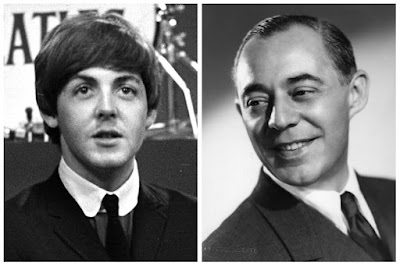A gift for melody, like a lot of creative talents, is both seemingly innate—i.e., some people have it, others just don't—and extremely contingent on a composer's taste, craft, effort, sweat, access to inspiration. Which is to say that while many of the best melodies seem almost to sing themselves, or to have somehow dropped from the ether fully formed (even as perceived by their creators), many others derive their earwormy pleasure from clearly conscious devices, conspicuous craft, even what you might call a bag of tricks.
I'm thinking right now of a simple but effective trick employed by two of the 20th century's great natural melodists, Paul McCartney and Richard Rodgers. I noted the first example because for some years "I've Just Seen a Face" was my default bedtime lullaby for my youngest son. It's a basic step-wise progression of three notes up (B, C#, D), separated by two or three pickup notes on the tonic of A. I've bolded the syllables of the moving notes for emphasis:
That plays out over an A chord; McCartney then repeats this exact melody over its relative minor, F#m. It's very satisfying to sing, even without accompaniment, which is at least one reason I think I resorted to it as a bedtime song.
Rodgers did a similar three-note ascent from a tonic (plus a little fillip), with an even more rhythmic effect befitting the trotting lyrics of
"Surrey With the Fringe on Top." I've also bolded the rising notes here:
That one takes a little more effort to nail than the Beatles tune, and is all the more satisfying for it. But the granddaddy of all these step-ladder melodies is a lesser known earlier song by Rodgers,
"Blue Room." I don't even need to highlight the ascent here (in this case the pickup is the dominant, C), as it's so clear and emphasized by half notes across a positively majestic five-note span from F up to C:

I don't think I need to spend any time unpacking why this trick gives these songs, and our spirits, a lift, do I? If melodies can be analogized to hooks, think of this as one of the sharper, pointier shapes a hook can take: not a mere upward scale but a kind of gymnastic up, down, up again exercise that makes our anticipation, and hence our satisfaction when our expectations are met, all the greater. In all cases these ascending tones support a lyric that connotes excitement, even arousal. And with all due respect to Hart's, Hammerstein's, and McCartney's lyrics, as I never tire of saying: As always,
the music tells the story.







Comments
Post a Comment